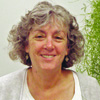What Are the Benefits of Digital Signage on Campus?
Until this past June, the Firelands campus of Bowling Green State University used bulletin boards in its public spaces to convey campus information. Cluttered with paper posters and fliers that curled and were hard to read, the bulletin boards clearly were a news medium of the past.
In their place, NEC digital signs now offer local news and weather and videos of campus events at a high-definition resolution of 1080p.
“Our goal was to use the digital signs to consolidate all our messaging and bring us into the 21st century in terms of how we communicate with the students,” says Dean Schnurr, director of marketing and community relations for BGSU Firelands, located in Huron, Ohio.
The university had talked about installing the signs for nearly six years. Julie Hamman, director of technology support services, says it was Schnurr, along with a capital improvements committee chaired by Mark Charville, BGSU Firelands’ director of budget and operations, who made the case for purchasing the digital signs.
“This was the perfect tool for us to provide our students with up-to-date information on campus events, as well as a modern form of communication to post information on severe weather warnings and catastrophic events,” Hamman explains.
“The units integrate with our remote desktop emergency management software, so in the event of an emergency, the software can push out a feed to the digital signs,” she adds.
Hamman says the 11 NEC digital signs range in size from the 40-inch P402 to the 55-inch MultiSync P551. The signs represent the first phase of the university’s modernization project. For phase two, set for next spring, the university plans to install a series of touch-screen kiosks. Both the digital signs and the kiosks are targeted for high-traffic areas where students congregate — places such as the student lounge and the theater lobby. The kiosks are primarily for posting interactive content, including digital maps of the campus.
“One of the features we’re really looking forward to with the touch screens, is ‘wayfinding,’ where a student or visitor can touch the screen and view a 3D rendering of the directions,” Hamman says.
BGSU Firelands kept costs down by having students from the university’s computer science and visual communications programs and graphic design students from the local high school build templates for the digital signs. But although modernizing communications will cost the campus $60,000 over three years, Hamman says it’s well worth the investment to upgrade the university’s image and attract new students to campus.
Voices

“We wanted a way to reach our students to let them know about upcoming events. E-mail was not effective. Digital signs let us reach them as they walk in the building, while they are sitting in common areas or simply while going down the hall. The response has been positive.”
— Chris Vegter, Director of Academic Technology and Information Resources, Monfort College of Business, University of Northern Colorado, Greeley, Colo.

“Digital signs have provided a unique, highly visible and professional communications tool. Our faculty, staff and students are easily kept aware of academic seminars, administrative announcements, new course offerings, student programs and even the ice cream socials.”
— Greg Robinson, Director of Information and Instructional Technology, College of Natural Resources, North Carolina State University, Raleigh, N.C.

“Digital signage has transformed how we communicate with our students and campus visitors. In just four years of implementing digital signage, we now have 19 departments creating content for almost 70 displays, located in 30 buildings campuswide. The messaging is creative, diverse and accessible — adding a whole new dimension to our spaces.”
— Nancy Cutler, Director, Media Services, Santa Clara University, Santa Clara, Calif.
Metrics
96%
The percentage of students at Marshall University in Huntington, W.Va., who noticed digital signs during a pilot program
SOURCE: “Digital Signage Content Creation and Management on Campus” (Platt Retail Institute, November 2011)
500
The brightness (in nits) of the new line of ViewSonic large-format, touch-screen displays
SOURCE: ViewSonic
1977
The year in which the first AccuTouch devices were marketed with the name “touch screen”
SOURCE: Elo Touch Solutions
40%
The energy saved by running digital signs only during peak hours
SOURCE: “Getting the Most Out of Digital Menu Boards” (Philips Commercial Signage Group, 2011)
16.7 million
The color depth of the 55-inch NEC MultiSync P551 digital sign
SOURCE: NEC
Who Made the Dean’s List?
Striving to collaborate more with college IT leaders, EdTech: Focus on Higher Education surveyed the web to find the best, most in-depth technology resources for professors, administrators, students and IT pros.
Our online feature — “The Dean’s List: 50 Must-Read Higher Education Blogs” — covers trends in social media, video conferencing, mobility and BYOD, distance learning and the latest developments in classroom technology. If it’s happening in higher education IT or in a college classroom, these bloggers are writing about it.
In addition to the blogs, we’ve also compiled Twitter handles, Facebook pages, Google+ accounts, YouTube channels and RSS feeds so readers can follow the IT bloggers every day on their platform of choice.
You can view the full list here. For those looking to make the grade for the 2013 list, please tweet us at @edtech_highered.







